Pandas have long captured our hearts with their adorable looks and laid-back demeanor, but there’s more to these lovable bears than meets the eye. Over the years, a lot of myths have cropped up about pandas, from their so-called laziness to their supposedly fragile nature. These misconceptions have painted a picture of pandas as creatures that are either too clumsy or uninterested in anything beyond lounging around, but the reality is far more interesting and complex.
In this list, we’re busting some of the most common myths about pandas, shedding light on the facts that often get overlooked. It turns out that pandas are far more active, resilient, and fascinating than we might have thought. From their unique behaviors to their role in the wild, there’s a lot to learn about these amazing animals beyond the fluff and the cuddles.
Pandas Are Always Lazy

Pandas are often portrayed as lazy, but this is far from the truth. In reality, these bears are quite active, spending most of their time foraging for bamboo and navigating their mountainous habitats. Their perceived laziness stems from their need to conserve energy due to their low-calorie diet.
Contrary to popular belief, pandas can be quite agile, skillfully climbing trees and traversing difficult terrains. Their playful behavior, particularly among cubs, further dispels the myth of laziness. By understanding their unique lifestyle, we gain a deeper appreciation for these remarkable creatures.
Pandas Are Solitary Animals

It’s a common misconception that pandas are entirely solitary. While they do spend a significant amount of time alone, pandas also engage in social interactions, especially during the breeding season. They communicate through vocalizations and scent markings, establishing connections with others.
Mother pandas display remarkable care and affection towards their cubs, emphasizing their capacity for bonding. Cubs often play together, showcasing playful and cooperative behaviors. These interactions highlight the complexity of panda social life, challenging the notion that they are completely solitary beings.
Pandas Only Eat Bamboo

Although bamboo constitutes about 99% of a panda’s diet, they are technically omnivores. Wild pandas occasionally consume other foods such as fruits, small rodents, or birds, providing essential nutrients and variety. This dietary flexibility aids their survival in varying conditions.
Their strong jaws and specialized teeth are adapted for bamboo consumption, but these adaptations also allow them to enjoy different food sources when available. Understanding their dietary habits offers insight into their adaptability and challenges the stereotype of pandas as strict bamboo eaters.
Pandas Are Helpless Creatures
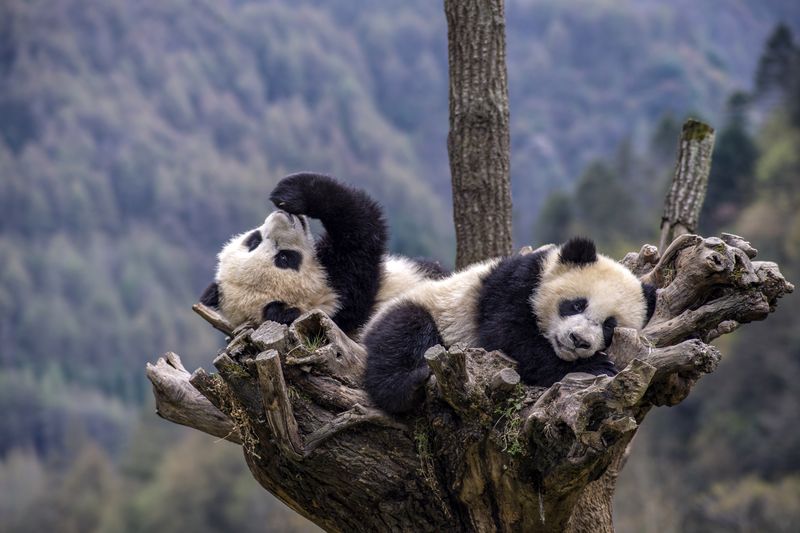
Despite their cute and cuddly appearance, pandas are far from helpless. Their powerful jaws and teeth enable them to crush bamboo stalks, while their muscular builds facilitate efficient movement through rugged terrains.
In the wild, pandas exhibit resourcefulness and resilience, adapting to their environment and overcoming obstacles. Their robust nature allows them to thrive in the wild, contradicting the image of them as defenseless animals. By recognizing their true capabilities, we can better appreciate the strength and adaptability of these amazing creatures.
Pandas Are Poor Climbers

Pandas are often thought to be poor climbers, but they are quite adept at scaling trees. This skill is crucial for avoiding predators and accessing food in their mountainous habitats. Their strong limbs and sharp claws aid in gripping and climbing with ease.
Young pandas, in particular, enjoy climbing as a form of play, honing their skills from an early age. These climbing abilities are vital for their survival, offering a stark contrast to the stereotype of pandas being clumsy or awkward.
Pandas Do Not Communicate
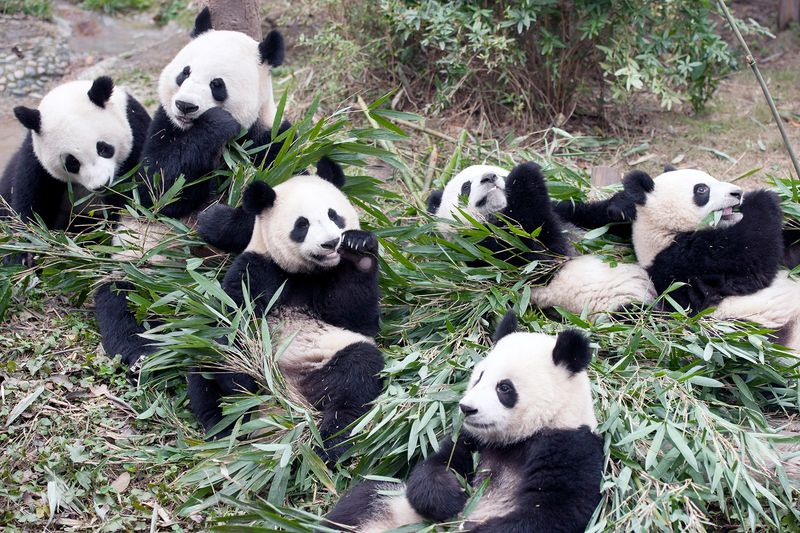
Communication is an essential part of panda life, contradicting the myth that they are silent creatures. Pandas use various vocalizations, such as bleats and honks, to convey messages to one another. Scent marking is another critical communication method, helping them establish territory and identify each other.
These communication skills are particularly vital during the breeding season, aiding in mate selection and bonding. The complexity of their communication reveals a sophisticated social structure, challenging the notion of pandas as mute or unsocial animals.
Pandas Are Not Intelligent

Pandas possess notable intelligence, often underestimated due to their playful demeanor. They demonstrate problem-solving skills, such as figuring out how to reach food or navigate obstacles in their environment.
Research has shown that pandas can learn and adapt quickly, exhibiting cognitive abilities that rival other bear species. Their curiosity and playful exploration further highlight their mental acuity. This intelligence helps them survive and thrive, debunking the myth of pandas as simple-minded animals.
Pandas Cannot Swim
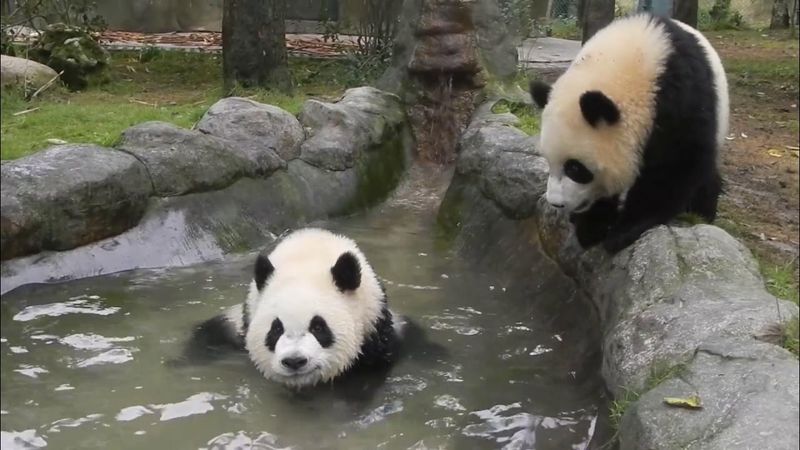
Contrary to popular belief, pandas are capable swimmers. They possess buoyant bodies and strong limbs, allowing them to navigate through water comfortably. Swimming aids them in reaching new feeding grounds or escaping dangers in their habitat.
Young pandas often play in water, honing their swimming skills and enjoying the refreshing activity. Their ability to swim adds to their versatility and adaptability, dispelling the misconception that pandas are solely land-dwelling creatures.
Pandas Are Always Passive
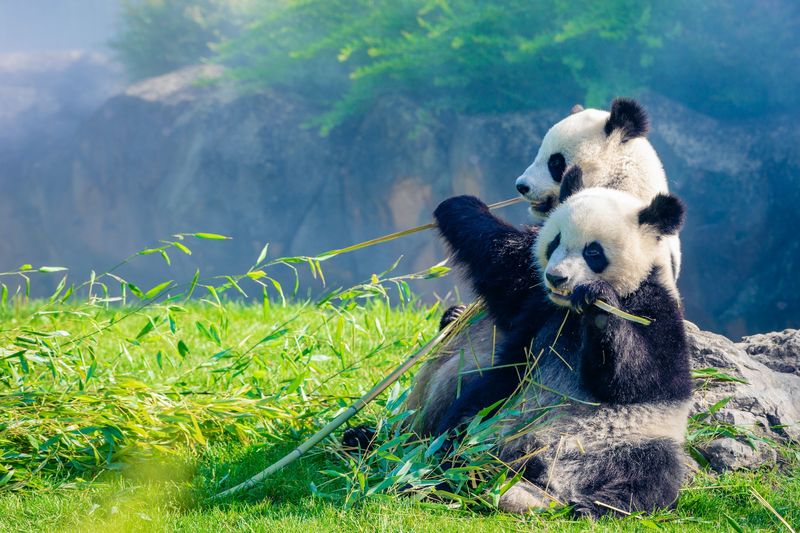
Pandas are sometimes seen as passive due to their relaxed demeanor, but they can be quite active and playful. Engaging in activities like climbing, wrestling, and exploring, pandas display a range of vibrant behaviors.
Cubs, in particular, are known for their energetic play, developing vital skills and social bonds through interaction. This active lifestyle highlights the dynamic nature of pandas, challenging the stereotype of them as passive or lethargic creatures.
Pandas Cannot Survive in the Wild
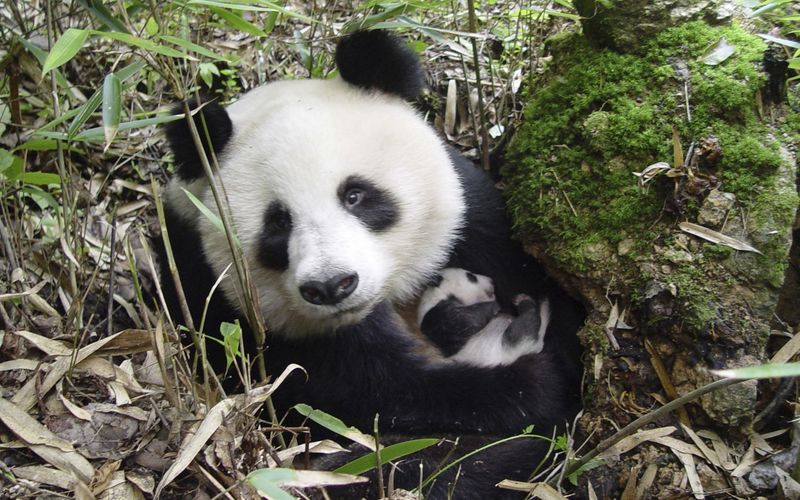
Some believe pandas cannot survive without human intervention, but wild pandas are resourceful and self-sufficient. They thrive in bamboo forests, utilizing their dietary specialization and adaptability to flourish in the wild.
Conservation efforts have helped increase wild panda populations, demonstrating their resilience and ability to survive independently. By recognizing their natural capabilities, we gain a deeper respect for pandas as robust and self-reliant creatures.
Pandas Are Always Black and White

While the iconic black and white fur is standard, some pandas have unique variations in their markings. These differences in fur patterns can include additional patches or unusual shapes, showcasing genetic diversity among the species.
The black and white coloration serves as camouflage in their snowy and forested habitats, but the occasional variation adds to the individuality of each panda. This diversity within the species challenges the rigid image of pandas as uniform in appearance.
Pandas Are Easy to Keep in Zoos

Keeping pandas in zoos is far from simple. Their specialized diet requires fresh bamboo, often imported from great distances. Enclosures must mimic natural habitats, offering climbing structures and enrichment to stimulate natural behaviors.
Pandas need mental and physical stimulation to thrive in captivity, requiring dedicated care and attention. These challenges highlight the complexity of housing pandas, dispelling the notion that they are easy to maintain in zoological settings.
Pandas Have No Predators

Though adult pandas face few natural predators, young cubs are vulnerable to threats like leopards and birds of prey. This vulnerability necessitates caution and protective behaviors, especially from mother pandas.
Understanding these risks provides insight into the survival strategies pandas employ to protect their young. The notion that pandas have no predators oversimplifies their ecological reality, acknowledging the challenges they face in the wild.
Pandas Are Indigenous to All of Asia

Pandas are often mistakenly believed to inhabit all of Asia, but their natural range is limited to specific mountainous regions in China. These areas offer the bamboo-rich habitats essential for their survival.
This narrow geographic range emphasizes the importance of conservation efforts to protect these vital habitats. Recognizing their specific indigenous regions challenges the myth of pandas as widespread across Asia.
Pandas Are Overly Protected

Some perceive pandas as overly protected, but these measures are vital for their continued existence. Habitat loss and fragmentation pose significant threats, necessitating conservation efforts to preserve their environment.
Protection programs have successfully increased panda populations, demonstrating the effectiveness of these initiatives. The notion of overprotection overlooks the critical challenges pandas face, emphasizing the importance of ongoing conservation.
Pandas Are Not Social Creatures
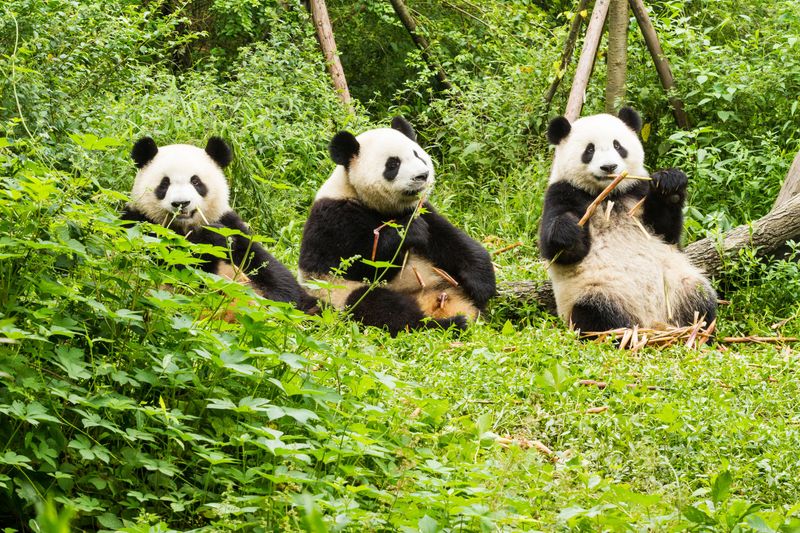
Though often seen alone, pandas exhibit social behaviors, particularly during mating seasons and in communal feeding areas. They communicate using vocalizations and body language, establishing social bonds with one another.
These interactions highlight the complexity of their social structure, challenging the misconception of pandas as antisocial creatures. Recognizing their social dynamics enriches our understanding of panda behavior and relationships.
Pandas Have No Role in the Ecosystem
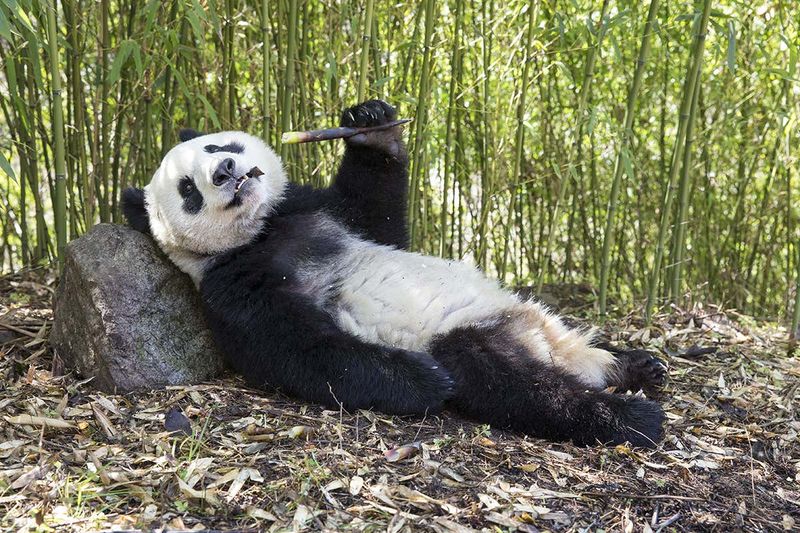
Pandas play a crucial role in their ecosystem by helping to maintain bamboo forest health. Their feeding habits promote new growth, aiding in the sustainability of these vital habitats.
By dispersing bamboo seeds and contributing to forest regeneration, pandas support biodiversity within their environment. This ecological role challenges the notion that pandas are insignificant in their natural habitats, highlighting their importance in maintaining ecological balance.
Pandas Are Not Adaptive
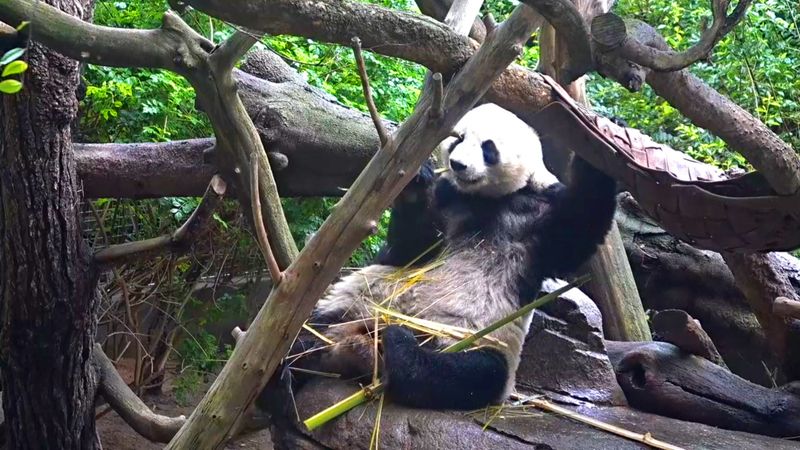
Pandas are remarkably adaptable, contrary to the belief that they struggle to adjust. They thrive in varying altitudes and climates, demonstrating flexibility in their diet and behavior to suit environmental changes.
This adaptability is evident in their ability to switch bamboo species or find alternative food sources when necessary. Recognizing their resilience and versatility dispels the myth of pandas as inflexible or rigid creatures.
Pandas Are Always Cute and Docile

While pandas are often seen as cute and docile, they are wild animals with independent spirits. They can be assertive, especially when protecting their territory or cubs.
This assertiveness is a natural aspect of their behavior, reflecting their need to survive and thrive in the wild. Acknowledging this complexity challenges the simplistic image of pandas as merely cute and cuddly animals.
Pandas Are Not Endangered Anymore

Though panda populations have grown due to successful conservation efforts, they remain classified as vulnerable. Habitat destruction and climate change continue to pose significant threats, requiring ongoing protection.
These challenges highlight the fragility of their recovery, emphasizing the need for sustained conservation initiatives. Understanding their status dispels the misconception that pandas are no longer endangered, reinforcing the importance of protecting these iconic creatures.

